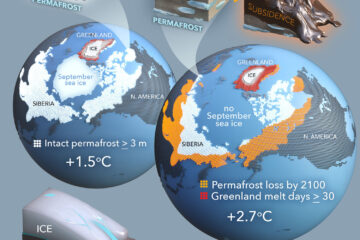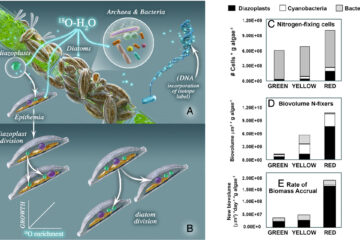Deep Yedoma permafrost: A synthesis of depositional characteristics and carbon vulnerability
Permafrost is a distinct feature of the terrestrial Arctic and is vulnerable to climate warming. Permafrost degrades in different ways, including deepening of a seasonally unfrozen surface and localized but rapid development of deep thaw features. Pleistocene ice-rich permafrost with syngenetic ice-wedges, termed Yedoma deposits, are widespread in Siberia, Alaska, and Yukon, Canada and may be especially prone to rapid-thaw processes. Freeze-locked organic matter in such deposits can be re-mobilized on short time-scales and contribute to a carbon-cycle climate feedback. Here we synthesize the characteristics and vulnerability of Yedoma deposits by synthesizing studies on the Yedoma origin and the associated organic carbon pool. We suggest that Yedoma deposits accumulated under periglacial weathering, transport, and deposition dynamics in non-glaciated regions during the late Pleistocene until the beginning of late glacial warming. The deposits formed due to a combination of aeolian, colluvial, nival, and alluvial deposition and simultaneous ground ice accumulation. We found up to 130 gigatons organic carbon in Yedoma, parts of which are well-preserved and available for fast decomposition after thaw. Based on incubation experiments, up to 10% of the Yedoma carbon is considered especially decomposable and may be released upon thaw. The substantial amount of ground ice in Yedoma makes it highly vulnerable to disturbances such as thermokarst and thermo-erosion processes. Mobilization of permafrost carbon is expected to increase under future climate warming. Our synthesis results underline the need of accounting for Yedoma carbon stocks in next generation Earth-System-Models for a more complete representation of the permafrost-carbon feedback.


